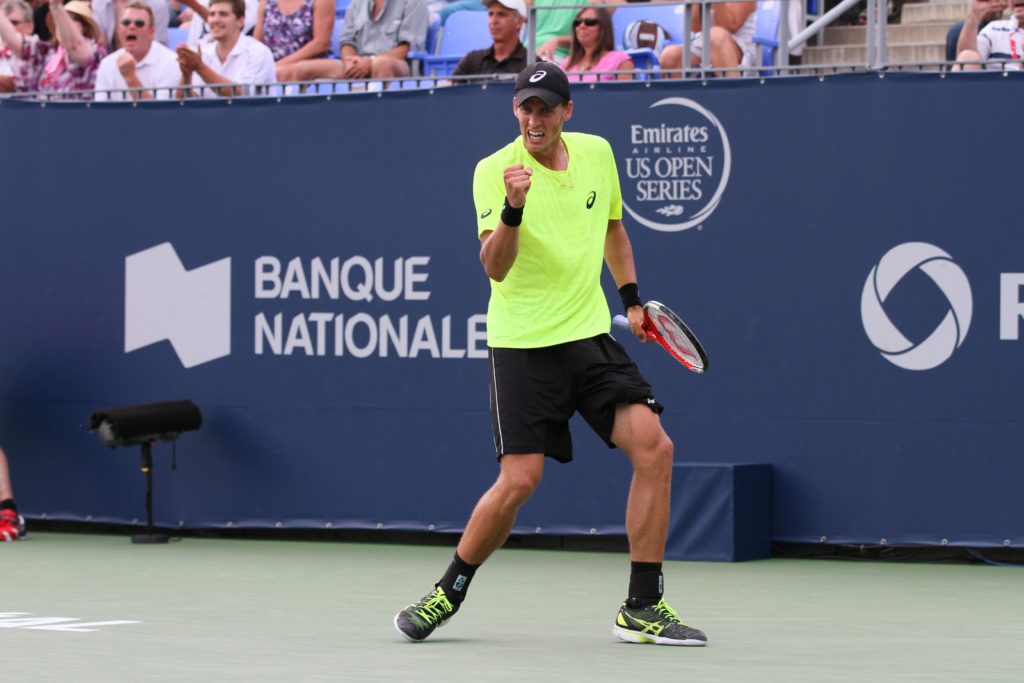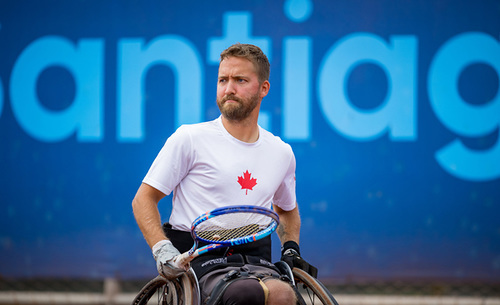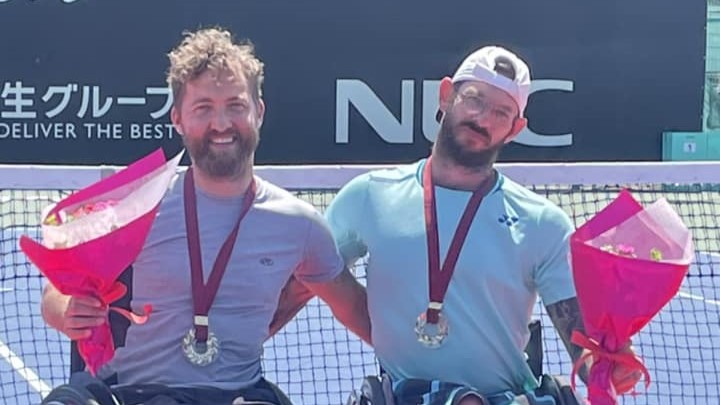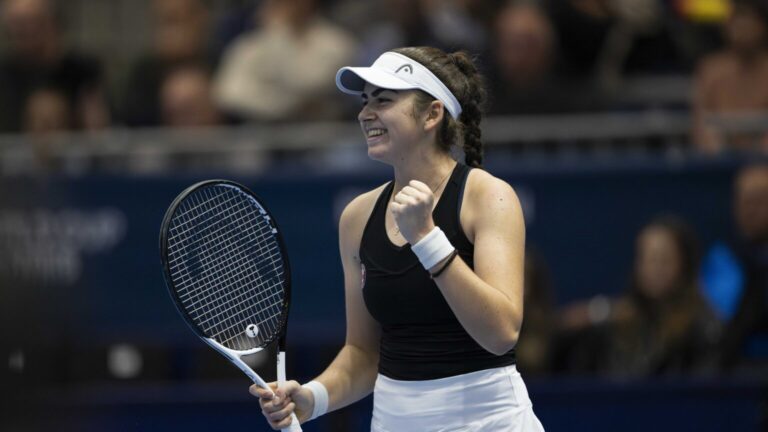
What are the chances? The logical answer is, of course, slim and none.
And that’s no insult to Raonic but simply going off what has happened so far in 2017 with Federer being such a rejuvenated, revitalized and peerless player.
Raonic can’t beat Federer because the living-legend Swiss has been unbeatable at major tournaments in 2017 – winning the Australian Open and his first four matches at Wimbledon to go 11-0 at Grand Slam events, and also being 11-0 at the only two Masters 1000s he played, taking the titles in Indian Wells and Miami.
The only blemishes on a stellar record in 2017 were two unlikely losses after having match point – to No. 116-ranked qualifier Evgeny Donskoy of Russia in Dubai in the tennis wasteland month of February and to old pal Tommy Haas in his first fledgling outing of the year on grass in Stuttgart last month. He rebounded from that by winning the ATP 500 grass-court event in Halle a week later.
But of course Raonic can beat Federer. He did just that a year ago in the Wimbledon semifinals and also in their only other meeting in 2016 – in the final of the season-opening ATP 250 event in Brisbane, Australia.
The winning scenario for Raonic has to be to serve well. And some of that would have to include serving and volleying.
After his 6-4, 6-2, 6-4 dusting of Grigor Dimitrov in the round-of-16 on Monday, Federer remarked about serving-and-volleying and the No. 11-ranked Bulgarian, “I’m a bit surprised he wouldn’t even attempt it once, maybe not even at 40-Love, just one time, just to see how it feels. Then, you know, you plant the seed maybe to let your opponent know you might do it, even once at 15-40 because you might feel better at net than from the baseline.
“I think it’s quite extreme not to serve-and-volley ever, especially when we’re on the grass. The grass is playing on the faster side. I chose to do it myself personally (winning 13 of 16 points) today, not as much as I could, but a lot. I was rewarded for it.”
So far at Wimbledon, Raonic and Federer (above with his coaches Ivan Ljubicic and Severin Luthi) are very similar in serve-and-volley points, although Federer winning his first round after just nine games when Alexandr Dolgopolov retired does skew the stats in some categories.
Raonic has won 56/73 of serve-and-volley points or 77% while Federer is 41/52 or 79%.
But the service stat that is most concerning for Raonic is points won on first and second serve through his first four matches. He has won 81% of first serve points to 79% for Federer, but the Swiss is more efficient on second serve winning 72 % to just 59% for Raonic.
In terms of services breaks – Raonic has lost serve five times in four matches while for Federer it’s three times in his four matches.
After defeating Dimitrov on Monday, and before he knew whether he was playing Raonic or Sascha Zverev, Federer said about facing either the big-serving 6-foot-5 Raonic or the big-serving 6-foot-6 Zverev, “if you play a baseliner, and you rush him off the court from the baseline, usually then you feel your very best. But to beat a big server is a different kind of match. It’s more of a penalty shootout. That’s what’s going to come my way with Raonic or Zverev. From that standpoint, that’s what I’m looking at right now.”
In interviews on Tuesday with Swiss television and journalists, Federer was more specific about Raonic saying that he’s a player who’s willing to take risks and can play above his potential – and that makes him dangerous. He added that Raonic is among the top four or five servers in the world.
The penalty shoot-out aspect of the match would probably be best represented by tiebreaks. In that sense Raonic is at least trending up after winning four tiebreaks in a row at Wimbledon – two against Jan-Lennard Struff in the first round, and one each in his second and third rounds against Mikhail Youzhny and Albert Ramos-Vinolas. The first one against Struff ended a streak of eight consecutive tiebreak losses by Raonic – a most unlikely stat for a player who has won more than 60 per cent of tiebreaks over his career.
What can be reassuring for Raonic (above with coach Mark Knowles) is that, despite not losing a set in four matches so far, Federer has been pushed to tiebreaks in the first set of two of them – Dusan Lajovic 7-6(0) in the second round and Mischa Zverev 7-6(3) in the third.
If Raonic can get to a tiebreak, then his chances of forcing Federer into a ‘penalty shoot-out’ situation increase significantly. Even if a year ago, in his 6-3, 6-7(3), 4-6, 7-5, 6-3 victory over Federer in the semifinals, it was Federer who won the only ‘breaker.’
Again on Tuesday, speaking with the Swiss media, Federer said that what he hopes to do is strategically put Raonic into difficult situations over and over again. But he also admitted that he can’t let himself get frustrated if Raonic comes up with winners on big occasions – he just has to say to himself “too good.”
In terms of time on court, it’s advantage Federer with him only having played for five hours and 40 minutes since day two, with Raonic totalling almost double that with 10 hours and 41 minutes.
“I feel like I’m rested enough,” Federer said looking ahead after beating Dimitrov on Tuesday. “I’ve had, you know, not the most toughest matches. I can look at this quarter-final in a totally relaxed fashion. Physically I’m not fighting anything like last year with my knee.”
He continued, “I can lean back on the match from last year that I played Milos here, and even once before in the semis (2014) here. I think it’s pretty much the same. I’ve got to bring the intensity, the focus that I’ve shown throughout this tournament, the mentality on the serve, first and second serve – very few wrong decision making. Understanding what to do at what stage. Then on the return, keep going for it, keep staying aggressive. Positive attitude. I do believe good things can happen.”
Everyone knows what a singular individual and supreme champion the seven-time Wimbledon winner is, and Raonic, on Monday, sounded as much like a fan as a fellow-traveler on the pro tour when he spoke about Federer’s revival in 2017.
“I thought it was quite impressive, the way he did it, at what stage in his career he did it, all these kind of things,” he said. “When you put together the storyline, it was sublime. He did it by going out there and playing the best tennis. He was playing more aggressive than he had over the last few years. He was doing it well, taking time away from guys, making guys feel uncomfortable, without much hesitation.
“He’s just trying to make the most of every single match. He really seems to be enjoying that. I don’t think there’s anybody that you look at their face when they’re playing that enjoys tennis as much as Roger.”
In order to win on the Centre Court on Wednesday – second match after the Andy Murray–Sam Querrey start at 1 p.m. (so roughly 4 p.m. or 11 a.m. ET in Canada) – Raonic will have to take Federer out of his comfort zone, which is a pretty expansive space. He will have to use his serve to build scoreboard pressure and try to out-hit and de-stabilize the Swiss off the ground in rallies that are as short as possible.
So far Raonic has won 46 per cent of baseline points to 55 per cent for Federer.
Raonic has been known to over-think some of his match-ups, but he’s playing in his 26th Grand Slam event at the age of 26 and should be nearly at his physical peak and have the maturity to handle the pressure and expectations.
“Roger’s been the best player this year, hands down,” No. 7-ranked Raonic said. “But it’s not about six months or what not – it comes down to Wednesday, one day. So I’ve just got to try to find a way to try to be better on that day.
“It’s just about going out there and trying to really put together a good match.”
Federer turns 36 in exactly four weeks. As invincible as he has been this year, older players can get a little tight and occasionally throw in a clunker – or a partial clunker. Raonic has to be vigilant and ready to pounce, and prepared to play right until the very end. That paid rewards 12 months ago in his three hour and 25-minute victory. It could do so again.
BRANSTINE INTO THIRD ROUND
Carson Branstine reached the third round of the Wimbledon junior girls event on Tuesday with a 6-1, 6-4 victory over Elysia Bolton of the U.S.
The 16-year-old from Montreal played a much cleaner match than her opponent – finishing with a winners to unforced errors ratio of 16/15 while the 17-year-old American was 8/22.
In the third round, the sixth-seeded Branstine, 5-foot-11, will play the winner of Fernanda Labrana of Chile and Mai Hontana of Japan.
PARTY LIKE IT’S CANADA’S 150th (No. 8)
The surprise guest at the Rogers Cup sesquicentennial of Canada party in London last week was the Grey Cup, which is emblematic of supremacy in the Canadian Football League. It was donated in 1909 by Governor General Earl Grey, who served from 1904 to 1911.
Here doubles ace Adil Shamasdin holds the storied cup in the company of Bianca Andreescu on his right and Gabriela Dabrowski on his left.
LONDON POST CARD
We never get tired of pictures of Wimbledon Common. This is one from a bright Sunday afternoon when lots of people were enjoying the weather and a dog was frolicking in the shallow pond.








